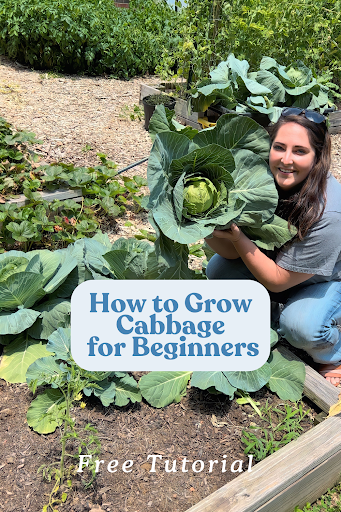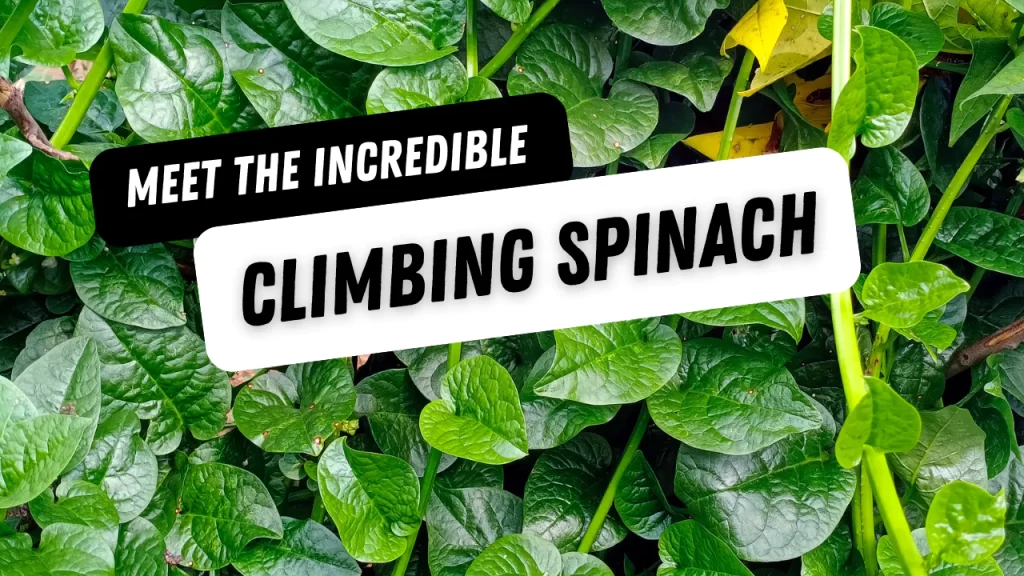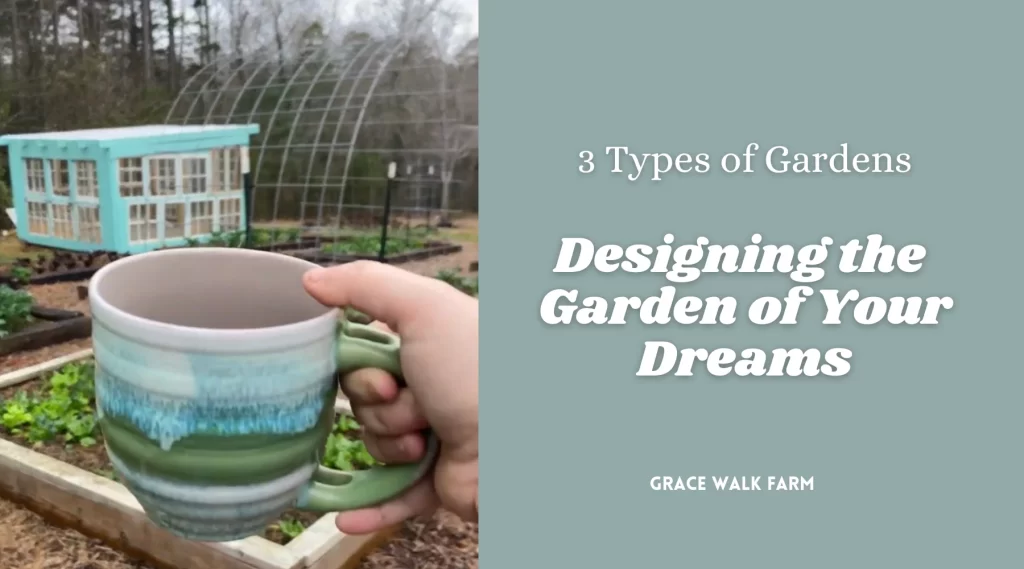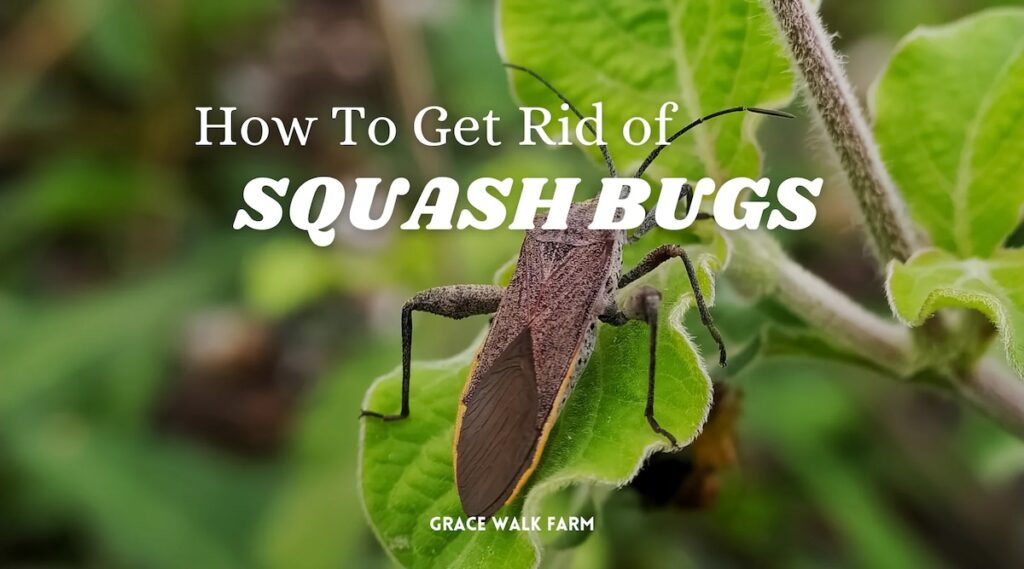Few things are as satisfying as slicing into a firm, homegrown cabbage straight from the garden. Whether you love crunchy coleslaw, tangy sauerkraut, or sautéed cabbage with butter, growing your own ensures the freshest flavor and the most nutrients. But if you’ve struggled with cabbage worms, split heads, or stunted growth, don’t worry—this guide will help! With the right soil, proper spacing, and a little patience, you can master how to grow cabbage and enjoy a steady harvest of crisp, flavorful heads.
Welcome to Grace Walk Farm, our family homestead in western NC. We share the highs and lows of our homestead journey, in hopes that it will encourage you to grow your own food too. Click here to grab our Beginner Garden Guide for free! Join our 600K strong Instagram community of homesteaders here. Thanks for stopping by!
How to Plant Cabbage
Soil preparation: Cabbage prefers fertile, well-drained soil with a pH between 6.0 and 6.5. Amend the soil with compost or well-rotted manure and work it into the top 6 inches of soil.
Planting: Cabbage can be grown from seed or from transplants. Start seeds indoors 6-8 weeks before the last frost date or sow them directly in the garden 2-3 weeks before the last frost date. Transplants can be set out in the garden 2-3 weeks before the last frost date. Plant cabbage seedlings or seeds 18-24 inches apart in rows that are 2-3 feet apart.
Watering: Cabbage needs consistent moisture to thrive. Water the plants deeply once or twice a week, depending on the weather conditions. Be careful not to overwater, as cabbage can develop root rot in waterlogged soil.
Fertilizing: Cabbage benefits from regular fertilization. Apply a balanced fertilizer at planting time and side-dress with nitrogen fertilizer once or twice during the growing season.
Pest control: Cabbage can be prone to pests such as aphids, cabbage loopers, and flea beetles. Monitor your plants regularly and use organic methods such as handpicking, insecticidal soap, or row covers to control pests.
Harvesting: Cabbage is ready to harvest when the heads are firm and compact. Cut the head off the stem at ground level with a sharp knife. Some cabbage varieties may produce smaller side heads after the main head is harvested.
Common Problems with Growing Cabbage
Pests: Cabbage can be attacked by a variety of pests, including aphids, cabbage loopers, and flea beetles. Use organic methods such as handpicking, insecticidal soap, or row covers to control pests.
Disease: Cabbage can be prone to fungal diseases such as black rot, clubroot, and powdery mildew. Practice good crop rotation and avoid planting cabbage in the same location every year. If you notice any signs of disease, remove and dispose of affected plants immediately.
Nutrient deficiencies: Cabbage may exhibit yellowing leaves or stunted growth due to nutrient deficiencies. Conduct a soil test to determine any deficiencies, and amend the soil with the appropriate fertilizer or organic matter.
Bolting: Cabbage may bolt, or prematurely flower, in response to stress such as high temperatures or drought. Provide consistent moisture and shade the plants during hot weather to prevent bolting.
Inadequate spacing: Cabbage plants that are too close together may not develop properly and can be prone to disease. Ensure that plants are spaced at least 18-24 inches apart in rows that are 2-3 feet apart.
Best Companions to Grow With Cabbage
Beets: Beets are a great companion plant for cabbage as they help to improve soil health and repel harmful nematodes.
Carrots: Carrots are a good companion plant for cabbage as they help to loosen the soil, making it easier for cabbage roots to grow.
Dill: Dill is a beneficial companion plant for cabbage as it attracts beneficial insects like ladybugs and lacewings, which help to control pests such as aphids and cabbage worms.
Mint: Mint is a good companion plant for cabbage as it repels cabbage moths and other pests.
Onions: Onions are a good companion plant for cabbage as they repel pests and help to deter fungal diseases.
Thyme: Thyme is a beneficial companion plant for cabbage as it repels cabbage worms and other pests.
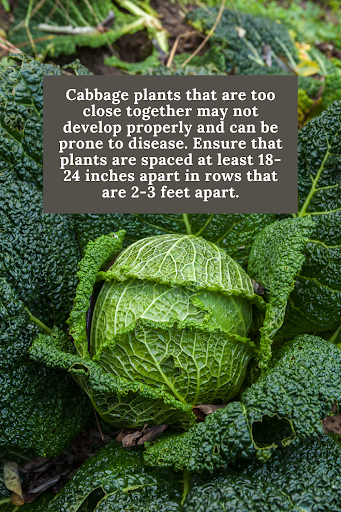
Harvesting and Preserving Homegrown Cabbage
Harvesting: Cabbage is ready to harvest when the heads are firm and compact. Cut the head off the stem at ground level with a sharp knife. If you are harvesting multiple heads, leave the outer leaves attached to the heads to protect them during storage.
Cleaning: Gently remove any soil or debris from the outer leaves with a soft-bristled brush or cloth.
Storing: Cabbage can be stored in several ways. For short-term storage, wrap the heads in plastic or aluminum foil and keep them in the refrigerator. For longer-term storage, store the heads in a cool, dry place, such as a root cellar or a cool basement. Keep the heads away from direct sunlight and heat sources, as these can cause the cabbage to wilt and spoil.
Freezing: Cabbage can also be frozen for later use. Blanch the cabbage by boiling it for 1-2 minutes and then immediately cooling it in an ice water bath. Drain the cabbage and store it in airtight containers or freezer bags.
Fermenting: Preserve cabbage by making sauerkraut, kimchi, and other ferments.
How to Save Cabbage Seeds
Choose the healthiest and most vigorous cabbage plants to save seeds from. Look for plants with strong stems, disease-free leaves, and well-formed heads. Cabbage is a biennial plant, meaning that it takes two years to complete its life cycle. To prevent cross-pollination with other cabbage plants, isolate the selected plants from other members of the Brassica family, such as broccoli, kale, and cauliflower, by at least 100 feet.
In the second year of growth, allow the cabbage plants to bolt and flower. The flowers will eventually develop into seed pods that turn brown when they are fully mature. Once the seed pods have turned brown and dry, cut the entire seed stalk off the plant and place it in a paper bag. Store the bag in a cool, dry place for several weeks to allow the seed pods to dry further and the seeds to separate from the pods.
Open the paper bag and remove the seed pods from the stalk. Crush the pods and separate the seeds from the debris using a sieve or a strainer. Remove any remaining debris by hand.
Store the seeds in a dry, airtight container, such as a glass jar or a plastic bag, and keep them in a cool, dry place until you are ready to use them for planting.
Best Cabbage Varieties for Beginner Gardeners
Early Jersey Wakefield: This is a small, pointed cabbage that matures quickly, usually in around 65 days. It is a good choice for gardeners with limited space, as it doesn’t take up as much room as other varieties.
Savoy: This is a crinkly-leaved cabbage that is known for its tenderness and flavor. It is a bit slower to mature than other varieties, but it is a good choice for gardeners who want a more unique and flavorful cabbage.
Red Express: This is a small, red cabbage that matures quickly, usually in around 70 days. It is a good choice for gardeners who want to add some color to their garden.
Golden Acre: This is a classic green cabbage that is known for its reliability and ease of growing. It matures in around 70-80 days and produces dense, round heads.
Copenhagen Market: This is a large, green cabbage that is easy to grow and produces large, dense heads. It is a good choice for gardeners who want a lot of cabbage for cooking and preserving.
Grow Your Own Cabbage at Home
Now that you know how to grow cabbage, you’re ready to enjoy one of the most versatile and rewarding crops in your garden. With good soil preparation, consistent care, and a little pest prevention, you’ll soon be harvesting firm, delicious heads perfect for your favorite dishes. Whether you’re making fresh salads, stir-fries, or homemade sauerkraut, homegrown cabbage is always worth the effort. So grab your seeds, plant with confidence, and enjoy the fruits (or rather, leaves!) of your labor. Happy gardening!
Also check out these blogs:
- The Best Gluten Free Sandwich Bread Recipe
- How to Grow Cauliflower: A Beginner’s Guide
- Why I Make Bone Broth for Flu
- Winter Wellness Tea: A Cozy Cup of Immune Support
- Hidden Benefits of Snow and Winter Weather for Your Garden
- Winter Gardening: Hacks to Keep Your Green Thumb Warm and Your Organic Garden Thriving

